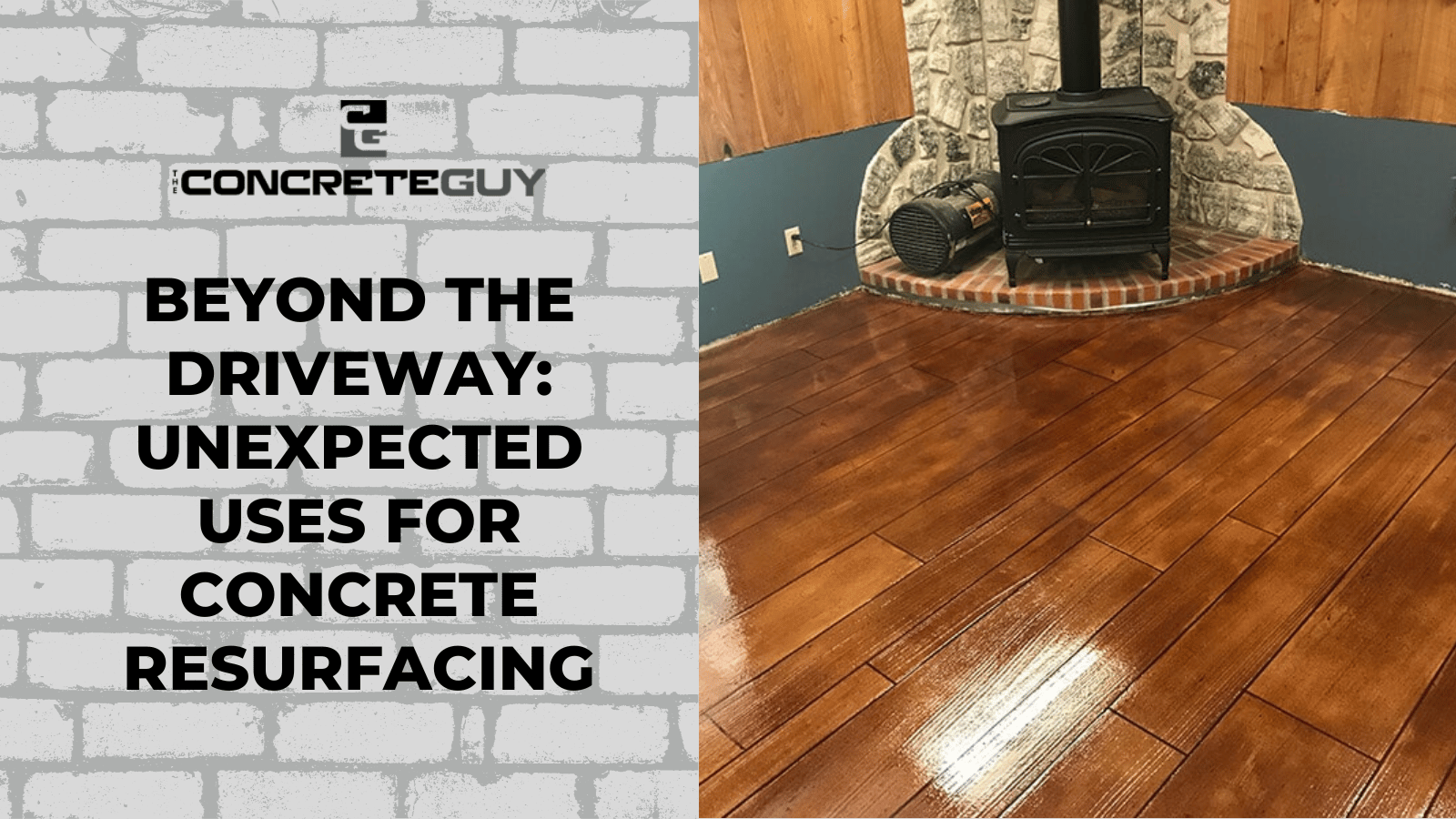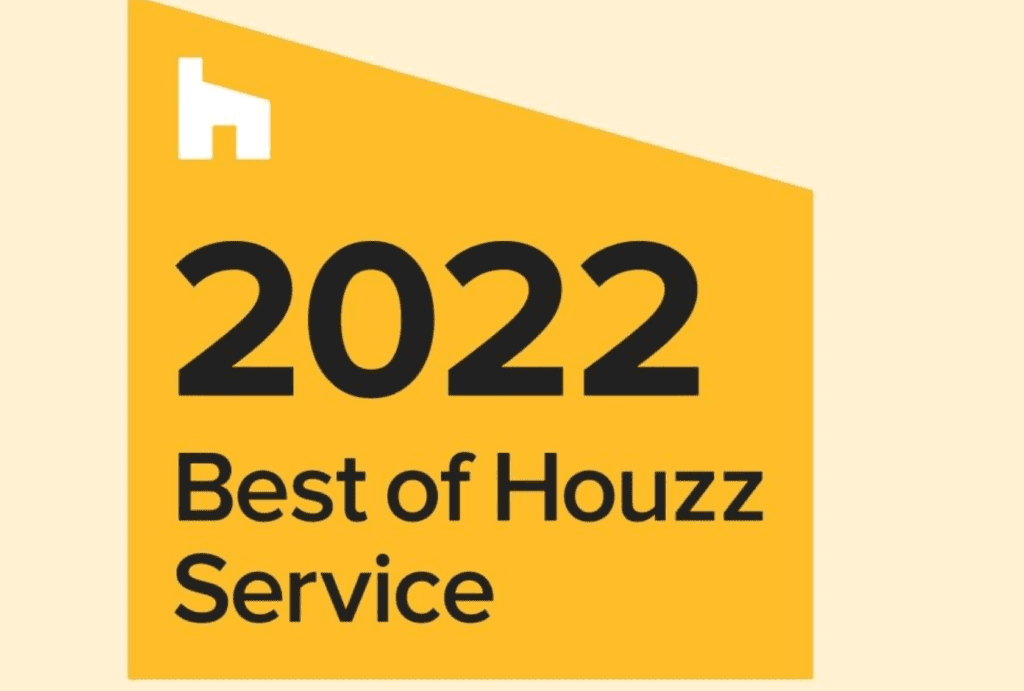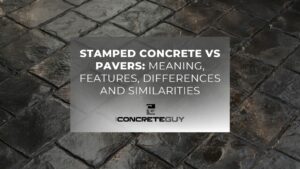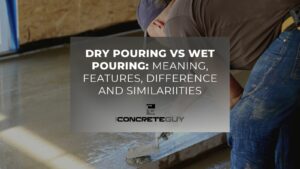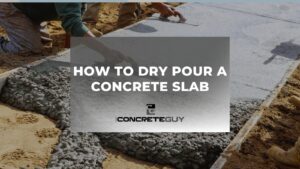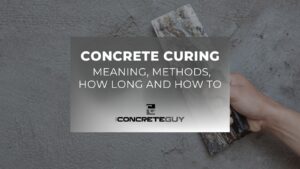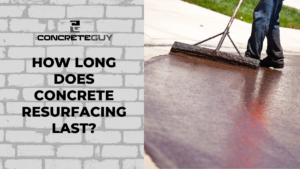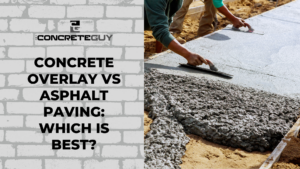Concrete resurfacing, often associated with driveway repairs, is an artful solution that extends far beyond mere functionality. At “The Concrete Guy,” we’re here to unveil the unexpected and creative ways in which this versatile technique can transform your spaces. While driveways are undoubtedly enhanced by concrete resurfacing, the potential doesn’t stop there. Join us on a journey through the world of innovative design and sustainability as we explore the myriad of imaginative uses for concrete resurfacing that go beyond the driveway. Whether you’re looking to breathe new life into outdoor spaces, embark on indoor makeovers, embrace sustainable landscaping solutions, or even discover the artistic expressions it offers, there are limitless possibilities that “The Concrete Guy” can bring to your home or business. Prepare to be inspired and amazed by the endless potential of concrete resurfacing in reshaping your environment.
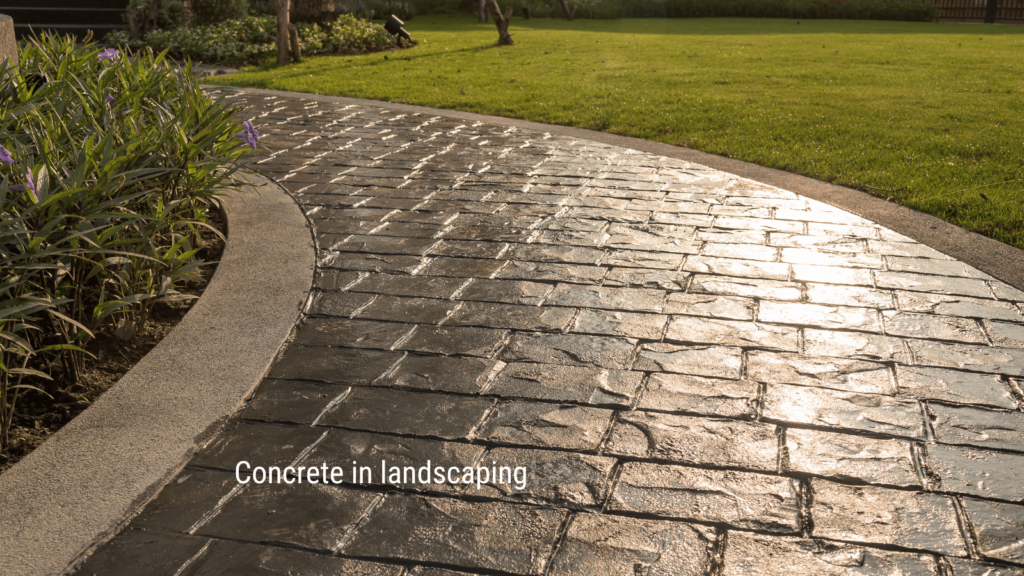
Enhancing Outdoor Spaces
There are so many exciting opportunities to elevate your outdoor areas, making them more inviting, stylish, and durable.
A. Resurfacing Patios for a Refreshed Look
- Transform your patio into a captivating outdoor oasis
- Choose from various finishes, colors, and patterns to create a personalized outdoor haven.
B. Creating Decorative Pathways and Walkways
- Upgrade your garden paths and walkways with decorative concrete.
- Achieve the look of natural stone or tile without the expense.
C. Transforming Pool Decks into Stylish Retreats
- Pool decks take on a new life with slip-resistant and cool-to-the-touch concrete.
- Customize designs to match your landscaping and create a seamless transition to the pool.
D. Adding Durability and Aesthetics to Outdoor Kitchen Surfaces
- Make outdoor cooking a joy with resurfaced kitchen countertops and bar areas.
- Enjoy easy maintenance and an elegant appearance that complements your outdoor space.
Innovative Indoor Makeovers
Concrete resurfacing isn’t limited to the outdoors; it can revitalize your indoor spaces as well.
A. Refurbishing Interior Concrete Floors with Unique Designs
- Give your interior floors a makeover with stained, stamped, or polished concrete.
- Create eye-catching patterns, colors, and textures to match your interior decor.
B. Utilizing Concrete Resurfacing for Basement Conversions
- Convert your basement into a functional living space with resurfaced floors.
- Enhance the basement’s appearance and make it more inviting for various uses.
C. Elevating the Garage Floor for a Multifunctional Space
- Reinvent your garage as a home gym, workshop, or entertainment area.
- Durable and easy-to-clean resurfaced floors are ideal for high-traffic garage spaces.
D. Design Possibilities for Indoor Fireplaces and Hearths
- Create stunning focal points with concrete resurfacing around your fireplace and hearth.
- Customized designs and finishes add warmth and character to your living spaces.
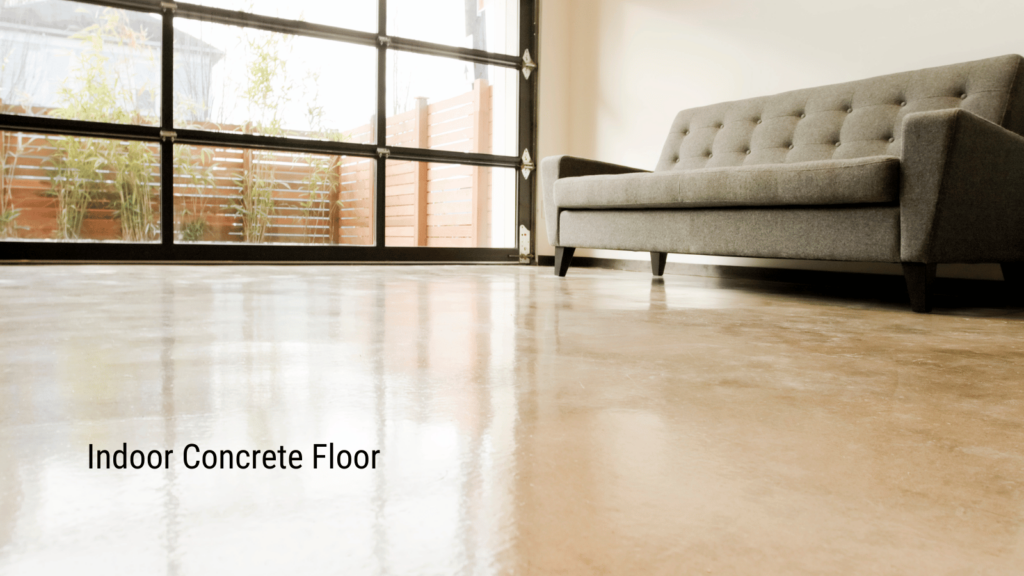
Innovative Flooring Solutions
Technology has revolutionized flooring options, offering a range of exciting possibilities that can transform your space. Here are some unique ways to use different types of concrete:
A. Solid Color Epoxy for Modern Garage Floors
- Solid color epoxy coatings provide a sleek and durable finish for garage floors.
- They resist stains, are easy to clean, and make your garage look polished and contemporary.
B. Rustic Wood Floors with Concrete Resurfacing
- Achieve the rustic charm of wood without the maintenance challenges.
- Concrete resurfacing can mimic the appearance of wood, providing both aesthetics and durability.
C. Polished Concrete for Industrial Elegance
- Polished concrete offers a minimalist, industrial aesthetic with high gloss and reflectivity.
- It’s an excellent choice for modern homes, commercial spaces, or anywhere you desire a chic, clean look.
D. Stained Concrete for Artistic Flair
- Stained concrete allows for artistic expression through colors and patterns.
- It’s an ideal option for adding character and uniqueness to interior and exterior spaces.
E. Metallic Designer Epoxy for a High-End Finish
- Metallic designer epoxy coatings create a luxurious, marbled effect.
- Elevate your floors to a work of art, adding a touch of opulence to any room.
These innovative flooring solutions demonstrate how concrete resurfacing can transcend traditional materials and design, offering endless possibilities for creating spaces that are both beautiful and functional. Whether you seek durability, aesthetics, or a combination of both, concrete resurfacing has the versatility to meet your unique needs.
Sustainable Landscaping Solutions
Concrete resurfacing plays a significant role in promoting sustainable landscaping practices, offering eco-friendly solutions that enhance both aesthetics and functionality.
A. Sustainable Landscaping with Concrete Resurfacing
- Sustainable landscaping involves using environmentally conscious design and materials.
- Resurfacing supports sustainability by reducing the need for resource-intensive materials like traditional paving stones.
B. Designing Eco-Friendly Driveways and Parking Areas
- Concrete resurfacing can transform driveways and parking areas into eco-friendly spaces.
- Permeable concrete surfaces allow rainwater to pass through, reducing runoff and supporting groundwater recharge.
C. Water-Efficient Permeable Concrete Surfaces
- Permeable concrete surfaces not only reduce water runoff but also prevent flooding and erosion.
- They contribute to water conservation by allowing rainwater to infiltrate the ground naturally.
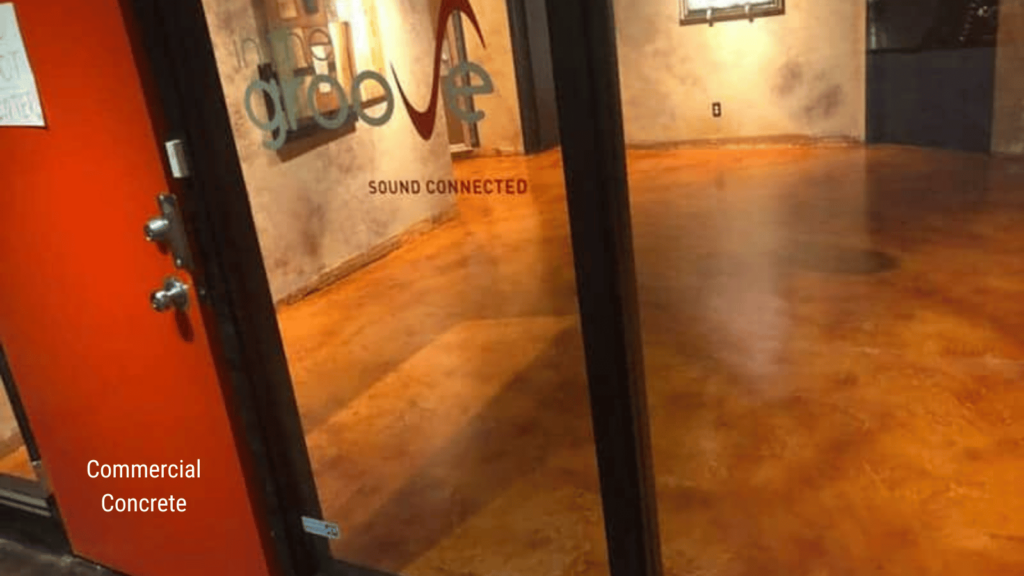
Creative Commercial Applications
Concrete resurfacing offers innovative solutions for commercial spaces, enhancing aesthetics, durability, and branding opportunities.
A. Stylish Storefronts and Entryways
- Impress customers with inviting and attractive storefronts.
- Concrete resurfacing can help create a memorable first impression for your business.
B. Durable Flooring Solutions for High-Traffic Areas
- Commercial spaces benefit from concrete resurfacing due to its durability and low maintenance.
- High-traffic areas like retail stores and offices can maintain a polished appearance with ease.
C. Concrete Resurfacing in Art Galleries and Public Spaces
- Art galleries and public spaces often require unique flooring solutions.
- Concrete resurfacing allows for customizable designs that complement the space’s artistic or functional requirements.
These creative commercial applications highlight the versatility of concrete resurfacing in enhancing the functionality and visual appeal of business environments. Whether you’re looking to create an eco-friendly landscape or make a lasting impression with your commercial space, concrete resurfacing offers solutions that go beyond the ordinary.
Cost Considerations and Maintenance
Concrete resurfacing offers a cost-effective solution for enhancing both aesthetics and functionality in various spaces. Understanding the factors influencing costs and adopting proper maintenance practices are key to maximizing the value of your investment.
A. Budgeting for Concrete Resurfacing Projects
- Determine the scope of your concrete resurfacing project, considering factors such as surface area, design complexity, and desired finishes.
- Obtain quotes from reputable contractors like “The Concrete Guy” to create a realistic budget.
- Consider long-term savings, as concrete resurfacing often provides a more economical alternative to full replacement.
B. Maintenance Tips for Long-Lasting Results
- Regular cleaning is essential to maintain the appearance and longevity of resurfaced surfaces. Use gentle, pH-balanced cleaners to prevent damage.
- Avoid harsh chemicals, as they can deteriorate the surface and compromise its integrity.
- Address any cracks or damage promptly to prevent further issues. Concrete resurfacing is durable, but proactive maintenance extends its lifespan.
- Periodic resealing can protect the surface from stains, moisture, and UV damage, ensuring it retains its fresh look.
C. ROI on Concrete Resurfacing Investments
- Concrete resurfacing not only enhances aesthetics but can also increase property value.
- The cost savings compared to complete replacement, coupled with improved curb appeal, contribute to a favorable return on investment.
- Consider the long-term benefits of reduced maintenance costs and improved durability when assessing the ROI.
Concrete resurfacing presents a world of possibilities that extend far beyond its utilitarian roots, offering limitless opportunities for enhancing the aesthetic appeal, functionality, and sustainability of various spaces. From personalized artistic expressions to sustainable landscaping solutions and innovative commercial applications, concrete resurfacing can truly transform environments with elegance and efficiency.
When embarking on your concrete resurfacing journey, consider enlisting the expertise of professionals like “The Concrete Guy.” Our knowledge, experience, and commitment to quality ensure that your project achieves the desired results, while their insight can guide you through the process, from budgeting to maintenance.
Remember that meticulous planning, creativity, and regular maintenance are key to ensuring that your concrete resurfacing investment stands the test of time. By doing so, you’ll not only have functional and visually stunning spaces but also environmentally conscious ones, leaving you with a sense of pride in your beautifully transformed surroundings.

